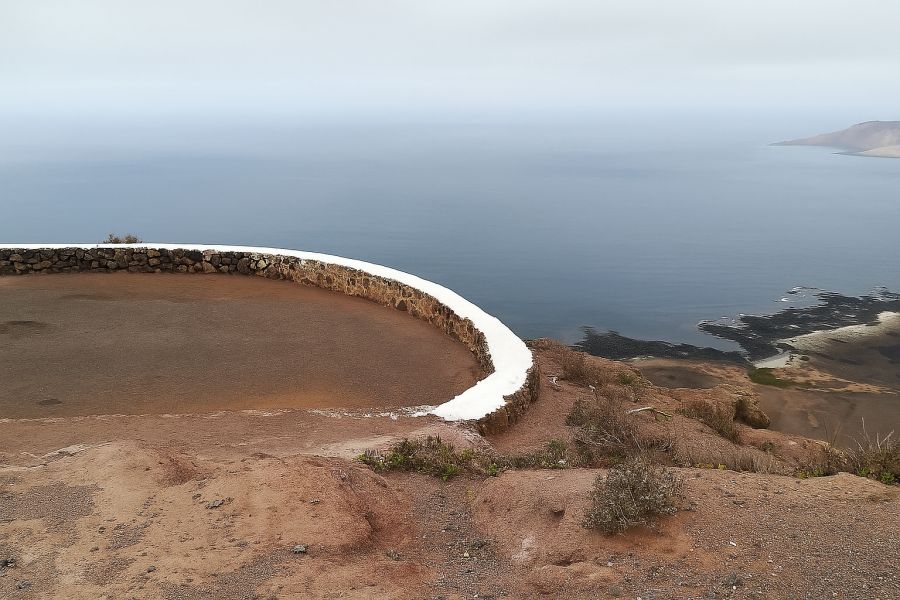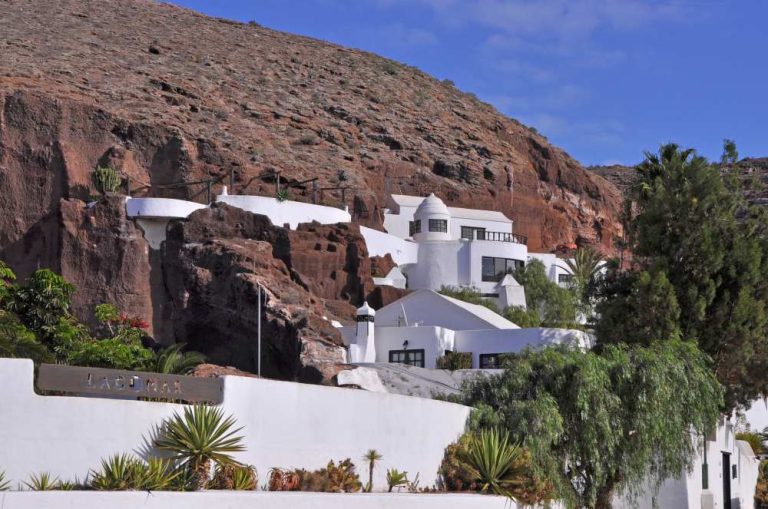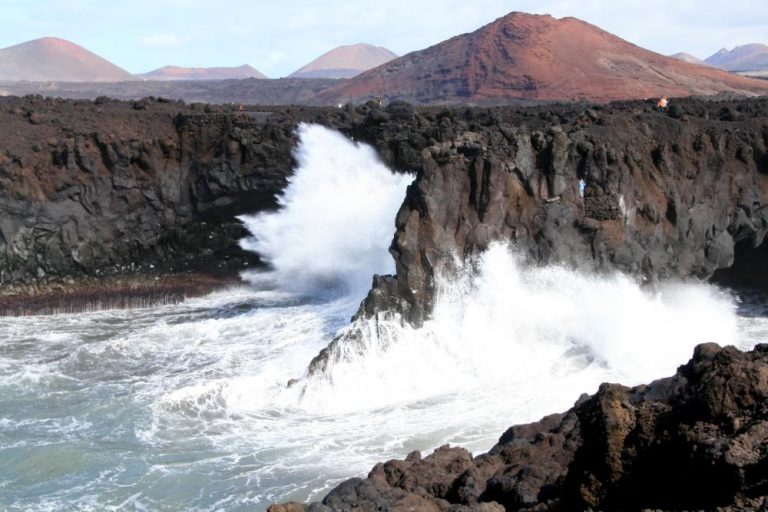Mirador de Guinate (Lanzarote)
The Mirador de Guinate is a natural balcony in Haría (north of Lanzarote) with open views of the Chinijo Archipelago -LaGraciosa, Alegranza- and the vertical cut of the Risco de Famara. It is a free, simple and, above all, quiet place. It is not unusual to arrive and find hardly another car, that calm is part of the charm. Personally I like it better than the Mirador del Rio, as it is a quieter area and free of charge. At sunset, when the sky turns orange, the viewpoint looks like a well-kept secret.
Where it is and what views it offers
Between Yé and Máguez, the cornice looks out over the Atlantic like a huge window.
Coordinates and altitude
Think of a balcony at an altitude of 500 m: that drop towards the sea gives the sensation of floating above La Graciosa.
What you see on clear days
With less haze and low clouds, the framing of La Graciosa is clean and very wide. Those who have compared it with the Mirador del Río point out the different angle and the feeling of solitude: “same views, but in silence”.
How to get there and parking
The key is to enter the village of Guinate and not to hesitate on the last stretch.
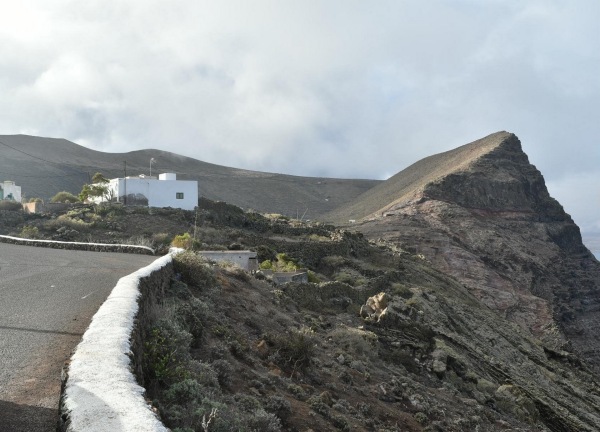
Access by car (step by step)
- Cross Guinate and follow the “dead end” sign to the end.
- The road is asphalted; the viewpoint is at the end of the street.
- Travellers insist that it is “easy to get to” and that the place is somewhat hidden, just what keeps it uncrowded.
Reference roads
It is usual to link LZ-202 and LZ-201 to access from Yé/Máguez. There are signs, but they are discreet: drive carefully.
Parking and safety margin
There are few spaces next to the edge. Park with margin, without encroaching manoeuvres, and avoid bringing the car close to the edge: the terrain is uneven.
Best time to go
The evening light suits the north of Lanzarote perfectly.
Afternoon vs. morning
The afternoon/early evening usually brings warm colours and less haze. In the morning it is more likely to be cloudy. In my opinion it is better to visit in the afternoon as it can give you some spectacular images.
Seasonality
In winter the air is usually clearer; in summer there are long days but possible mist. If you’re going to be photographing, bring a windbreaker: the trade winds are unforgiving.
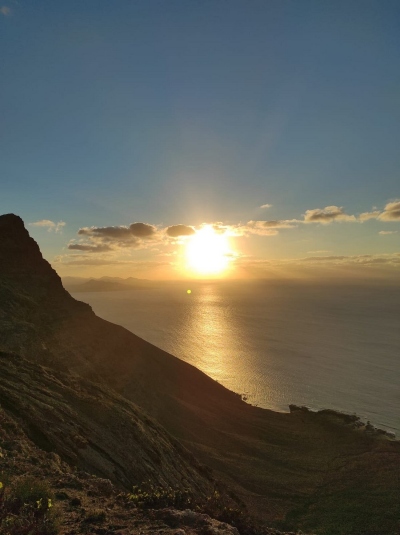
Best time per season (indicative)
| Station | Best band | Useful notes |
|---|---|---|
| Winter | Afternoon (16:30-18:30) | Warm light, clear air; shelter from the wind. |
| Spring | Last 2 hours of sunshine | Frequent high clouds; interesting skies. |
| Summer | Afternoon (18:30-20:30) | Possible haze; wait for the sun to go down. |
| Autumn | Afternoon (16:30-19:00) | Sharp contrasts over La Graciosa. |
Wind, security and families
The trade wind often blows strongly. Several travellers recommend holding on to hats and backpacks and staying behind the railing. With children, the plan works well if you keep your distance from the edge and wear shoes with soles.
Guinate or Mirador del Rio?
Both viewpoints offer the great postcard view of La Graciosa, but the experience changes.
Guinate vs. Mirador del Río
| Aspect | Guinate Viewpoint | River Viewpoint |
|---|---|---|
| Price | Free | Payable |
| Influx | Low (“uncrowded”) | Alta (iconic and much visited) |
| Environment | Natural, “hidden”, without artifice | César Manrique‘s architecture, services |
| Photographic approach | Open angle to La Graciosa and Risco | Interior windows + terraces |
| Ideal if… | You are looking for silence and sunset without people | You want design, cafe and lookout “museum”. |
What to see nearby
A few kilometres away, the Mirador del Río offers another perspective with services. There is also the La Corona volcano, a thousand-year-old landscape and a good spot for birdwatching. The north of Haría invites you to spend half a day without rushing. Many travellers suggest visiting both: Mirador del Río to discover the work of Manrique and Guinate at sunset for photos and peace and quiet.
Hiking and scenic routes
If you like walking, a beautiful option is to link Yé – Guinate. It is an exposed stretch, with cliffs and constant views of La Graciosa. Check a reliable track, respect trails and avoid windy days.
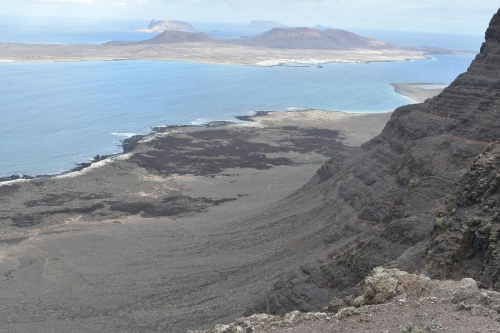
Practical advice
- Windproof even in summer; the trade winds are strong.
- Firm footing (uneven terrain at the edge).
- Water and sun protection all year round.
- Driving: drive slowly in town; give way in narrow sections.
- Respect the environment: don’t leave waste (or cigarette butts), don’t pile up stones, don’t feed wildlife and keep the place quiet.
Frequently asked questions
About the author

Maike Famara
Director of Surf Famara. A free surfer from the 1970s, renowned in the Canary Islands, he has surfed on five continents (the entire South African coast, Western Australia, Indonesia, Peru, Chile, Puerto Rico, Panama, France, Portugal, Senegal, Morocco...) and has dedicated himself to teaching and developing new surfers since 1996! You can find him in San Juan or La Santa, where he remains connected to the ocean like the first day.

